Let The Sunshine In
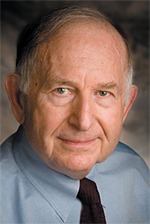
Light streaming into a set can be a very satisfying visual effect, even when it is not important to establish the time of day. Many times it is necessary to convince the viewer that you are not in a studio, but actually in a real room in a real house.
THE BIG LIGHT
The straightforward method of doing this is to place a nice big light outside the room's window and light the room through the window.
Very early in my experience, I was aware of the fact that the amount of distortion evident in a window's projected image would be inversely proportional to the production's budget. This was very apparent in what were called "B" pictures, no longer a term used as there are now only "A" pictures.
The real sun through a real window will cause the vertical mullions to project vertical shadows. But more important, all the shadows caused by, say, a window with horizontal blinds in the real world will be parallel and not diverge.
The budget enters into the mix because in order to get the horizontal shadows parallel, the lamp through the window has to be placed as far back as possible from the window. This requires a larger studio…and larger budget.
This distortion effect is shown in Fig 1. Also notice that the vertical tape shadows are not placed equidistant as they would be on the blind itself.
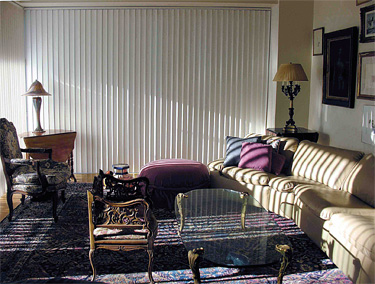
Fig. 2: Real sun through a real window in a real location. This is the ideal we are trying to achieve.THE REAL THING
Fig. 2 is the real sun through a real window in a real location. This is the ideal we are trying to achieve. Notice that the shadows from the vertical blinds are not only parallel, but also do not diverge and are spaced equally, just as the blinds creating the light patterns are. Compare it with the unrealistic shadows in the first photo.
THE TV SOLUTION
Borrowing from the theater, television lighting designers, when faced with similar space problems, started to use projected patterns to simulate the shadows from the window. A simple, inexpensive, etched metal pattern placed in the slot provided in every theatrical ellipsoidal spotlight, and focused in a likely place on a set wall can be made to work satisfactorily, even today with all our technologically advanced tools.
GEOMETRY AND DISTORTION
Fig. 3 shows a common Venetian blind pattern as it looks when placed in the pattern slot of an ellipsoidal reflector spotlight (ERS) or Leko and aimed straight into a wall at a right angle to the wall.
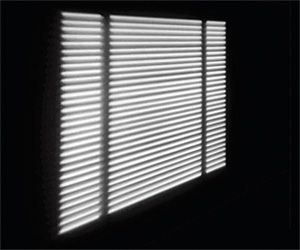
Fig. 1: Distortion created by shining real sunlight through a window on the set.
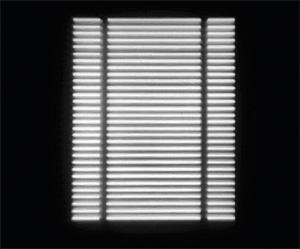
Fig. 3: A common Venetian blind pattern as it looks when placed in the pattern slot of an ellipsoidal reflector spotlight (ERS ) or Leko and aimed straight into a wall at a right angle to the wall.
However, in actuality, our lamp might be placed up high, tilted and slanted into the wall. If we place our Venetian blind pattern into the instrument in this orientation, the resultant distorted image shown in Fig. 4 results. As expected, the horizontal light stripes are not parallel and do diverge as in our "B" movie.
However contrary to what happens in the lamp through the window set-up where the vertical shadows are always parallel, the vertical shadows are also skewed and are not parallel. When this pattern was focused, the pattern holder slot of the fixture had been rotated to attempt to correct the vertical shadows. The result is that the right-hand shadow has been made plumb-line vertical, but the slant of the left shadow has been made more apparent. For each step forward, one backward.
THE COMPROMISE
What looked so promising has now created some problems. Don't give up yet as there are certain measures, which can be applied to limit the distortion difficulties. One is to replace the regular patterns with window patterns, pre-distorted, so that if the ERS is placed at right angles to a wall, the blind's verticals are not slanted. (See Fig. 5.)
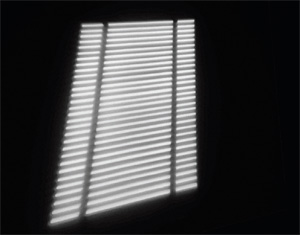
Fig. 4: A distorted image results when a light shining through a Venetian blind is created by a lamp placed up high, tilted and slanted into the wall. As expected, the horizontal light stripes are not parallel and do diverge.
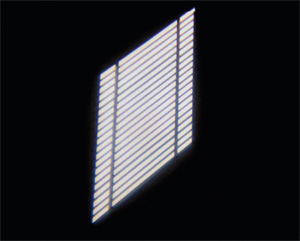
Fig. 5: Distortion can be limited by replacing the regular patterns with window patterns, pre-distorted, so that if the ERS is placed at right angles to a wall, the blind's verticals are not slanted.
The horizontal spacing diverging distortions, although they do exist, are usually not enough to be noticeable. (These patterns are available from GAM Products who has a very large catalog of all sorts of interesting gobos.).
Also, in all cases, be aware that to limit any type of geometric distortion, it is better to place the unit as far away as practical from the projection surface. The focal length of the unit's lens should be as long as is needed to get the correct projected image size. In other words, if you can, move that lamp with the 50-degree lens back and replace it with a 36-degree lens tube. Try to keep it real.
Bill Klages would like to extend an invitation to all the lighting people out there to give him your thoughts at billklages@roadrunner.com
The professional video industry's #1 source for news, trends and product and tech information. Sign up below.
